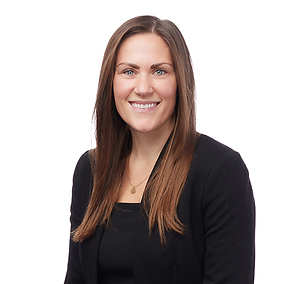Overview
The treatment of Common Area Maintenance (CAM) fees is often a point of contention for landlords and tenants alike. Landlord-tenant CAM reconciliation for retail leases often occurs shortly after the first of the year. As 2017 is underway, it is important for landlords to consider how to best address CAM fee reconciliation and agreements to minimize their own operating costs without harming the tenant’s ability to generate profit.
Traditionally, a commercial lease includes a CAM fee provision that is structured on a pro rata basis, which is often determined by dividing the leasable floor area of the premises by the tenant’s share of the leased floor area of the property. The CAM fee provision typically allocates the pro rata share of the landlord’s actual costs for the property’s common spaces to each of the tenants as outlined in the lease. This traditional CAM fee structure can be unpredictable for the tenant where costs may vary based on differing operation and maintenance expenses each year.
Generally, landlords desire broad CAM provisions that cover the landlord’s costs of owning and operating the retail space. Additionally, the landlord may seek to have CAM provisions include administrative or overhead costs the landlord may incur throughout the year. In contrast, tenants typically desire narrow provisions that limit their responsibility to compensate the landlord for only certain operating and maintenance expenses in order to control gross-occupancy costs. Ultimately, CAM provisions indicate whether the landlord or the tenant will be responsible for funding the upkeep of common spaces and mutually-beneficial services, and thus, CAM negotiations have led to a rise of differing CAM-fee structures to ameliorate CAM fee issues between landlords and tenants.
As a landlord, it is important to understand the benefits and consequences of the alternative CAM fee structures. For instance, many retail leases now include fixed CAM fees or capped CAM charges paired with set annual increases or to avoid negotiation costs regarding CAM fees.
A fixed CAM fee provision (sometimes referred to as a “modified gross lease”) sets a fixed initial fee with a preset rate of increase in subsequent years, whereas a CAM cap limits how much the tenant’s CAM fee can increase above the initial agreed upon CAM fee in subsequent years.
Many tenants seek a cap for controllable CAM charge increases by setting specific percentage increase limits, often between three and five percent annually. However, even caps on “controllable expenses,” which excludes things like snow removal, utilities, taxes, and insurance, may create unexpected costs for the landlord. Thus, parties must often determine whether to use a total CAM fee cap or a controllable expense CAM fee cap. A total CAM fee cap limits the amount the total CAM fee can increase, whereas a controllable expense CAM cap excludes “uncontrollable costs” or costs outside the landlord’s control in the “capped” amount. Thus, the controllable costs are capped at a certain amount or percentage increase but the tenant continues to pay a pro rata share of the uncontrollable costs at the end of the year.
Both a fixed CAM fee and various CAM cap provisions allow tenants some predictability regarding their operating costs for the year by limiting the amount of CAM fees the landlord can require the tenant to pay during CAM fee reconciliation. Tenants believe that fixed CAM fee provisions or a CAM cap can create an incentive for landlords to limit CAM costs because the landlord will be responsible for CAM fees above the fixed fee or cap.
While fixed CAM fees or even CAM caps allow predictability for tenants, they often create unpredictable expenses for landlords. Some landlords are able to accurately predict a fixed CAM fee or a reasonable CAM cap, but many predictions are not accurate and a low CAM fee prediction or inflation can generate large unpredicted expenses. Even if the landlord includes a cushion within the CAM fee calculation beyond the annual increase, any unexpected inflation increases beyond the cushion will not be recoverable from the tenant. If the landlord consistently falls short on tenant CAM fees and cannot recoup the costs, it will be difficult for the landlord to maintain or sell the property and drive down returns to its investors or owners.
Landlords should first prefer a pass through CAM fee approach, but if the tenant insists on a fixed CAM fee or a CAM cap, the landlord has a few options. One solution is to reset the fixed CAM fee or CAM cap amount periodically based on actual costs. A reset or CAP change will likely involve the expensive negotiations that the fixed CAM agreement aimed to alleviate in the first place. However, such negotiations may not be successful. Another solution is limiting the fixed CAM fee or CAM cap to certain categories as discussed above. This option at least narrows the scope of the risk for the landlord. A third solution is limiting the increases to an outside metric such as the consumer price index (CPI). This solution also mitigates the landlord risk but can be complicated to negotiation. It can also be imprecise as the CPI and certain uncontrollable costs such as snowfall are not directly related.
Therefore, as a landlord, it is important to consider the balance of making CAM fees more predictable and affordable for tenants while preventing unpredictable absorption of large CAM fees as the landlord.

